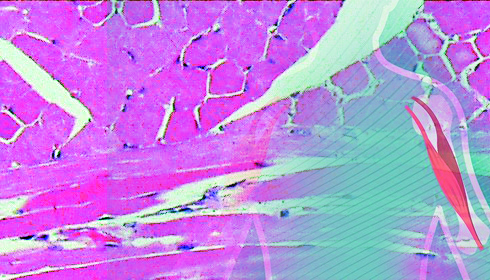
Tokyo Scientists Unveil New Molecule for Muscle Therapy
In a breakthrough development, researchers at Tokyo Metropolitan University have unveiled a game-changing medication delivery molecule. This revolutionary zwitterionic polymer combination has the potential to transform the treatment of critical muscle illnesses by efficiently delivering plasmid DNA into skeletal muscle cells.
Professor Shoichiro Asayama and his team developed a new zwitterionic polymer molecule (CA-PVIm) containing an imidazolium cation. This chemical successfully attaches to plasmid DNA (pDNA) without altering its structure. The results of injecting this chemical into mouse muscle tissue were extraordinary: broad gene expression indicated the successful delivery and activation of the pDNA.
"This new molecule is a game-changer," said Professor Asayama. "We observed gene expression across a significantly broader area than with bare pDNA, demonstrating that cells took up our polyion and underwent endosomal escape," he added.
The team's originality lies in their use of zwitterions, which are molecules with both positive and negative charges. Traditional positively charged polymers frequently pose toxicity threats to cells. The imidazolium cation of CA-PVIm, on the other hand, distributes its positive charge around an atom ring, resulting in a strong but safe binding to pDNA. Negatively charged carboxyl groups combine with this to form a balanced and bioinert molecule.
Preliminary studies demonstrated that this novel chemical retained a coating of bound water molecules in solution, hence increasing its biocompatibility. When complexed with CA-PVIm, the pDNA remained intact and functional, which is important for gene therapy success.
"Our optimal compound, CA(7)-PVIm, showed the greatest efficacy, with 7% of sites bearing negative charges," Asayama told me. "This ensures efficient delivery of therapeutic DNA across large muscle masses, paving the way for advanced treatments of muscular diseases."
This research has consequences that extend beyond muscular therapy. This novel drug delivery approach solves issues encountered in conventional methods, such as undesired aggregation, and provides a versatile platform for a variety of therapeutic applications.
Local media coverage emphasizes the excitement surrounding this breakthrough. "The potential for this new delivery system is immense," claimed an unnamed source. "It marks a paradigm shift in how we approach treatment for a range of conditions, particularly those affecting the muscles."
This achievement emphasizes the continued need for novel solutions in drug delivery systems, pointing to a future in which more effective and focused medicines become the norm.